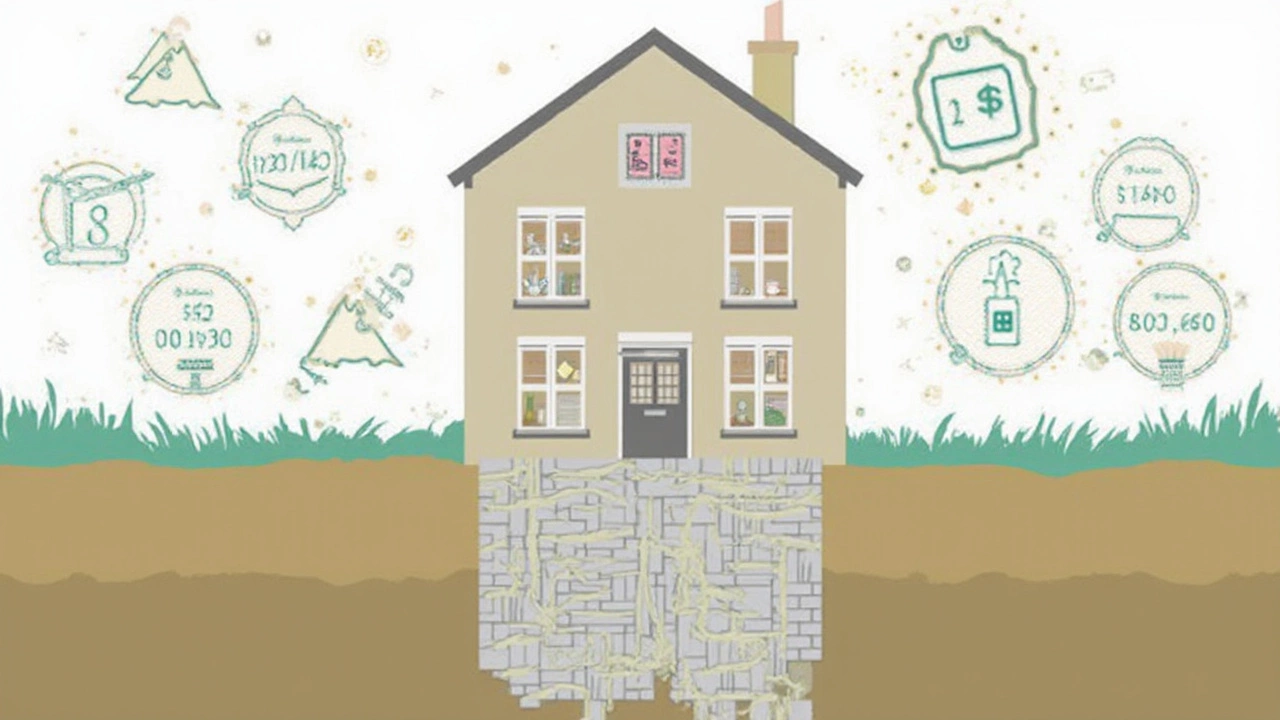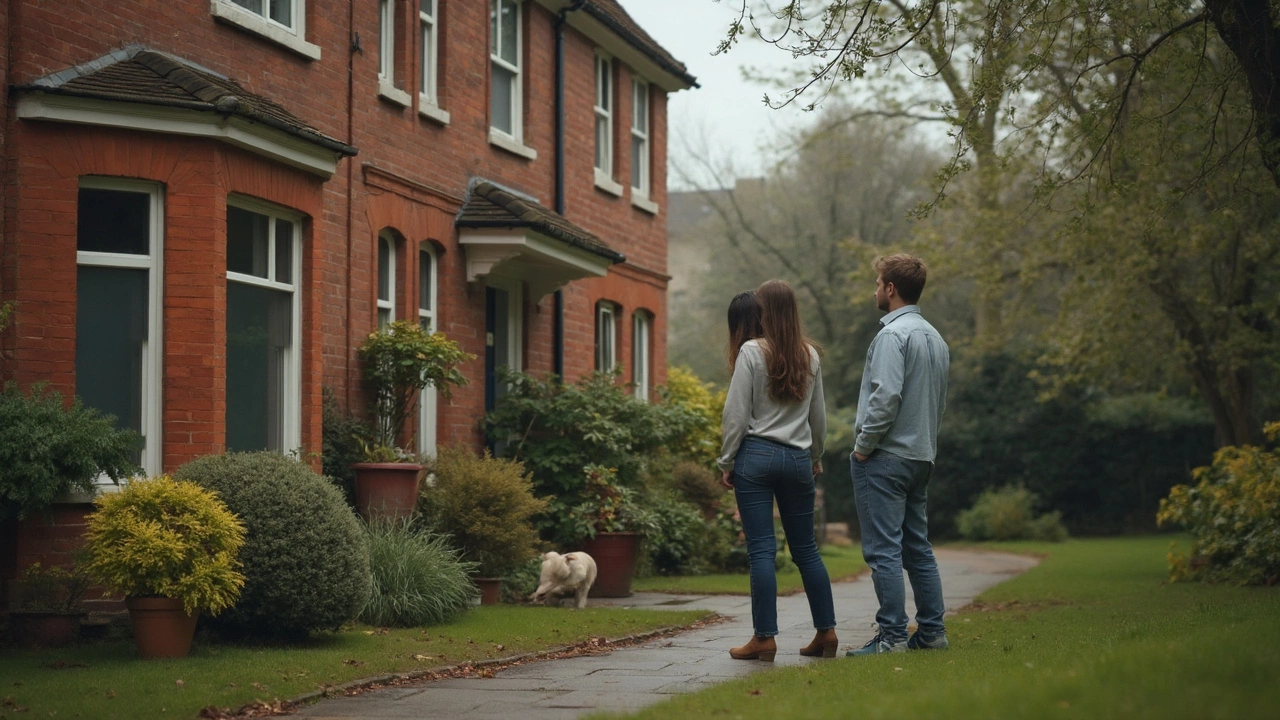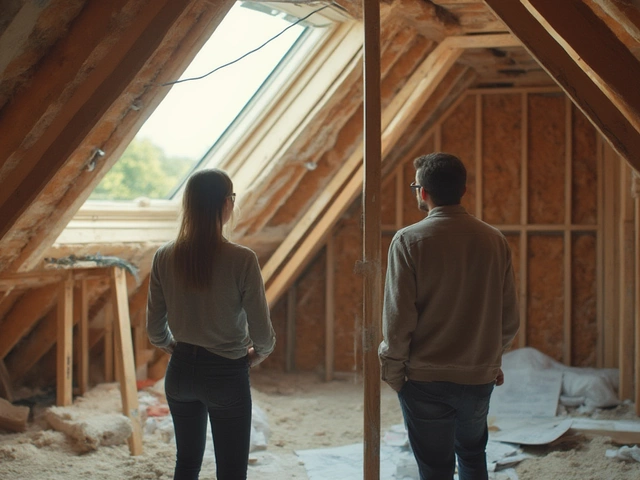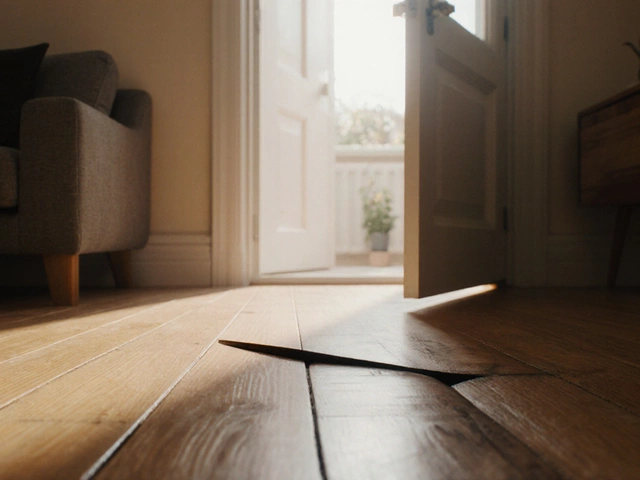Cracks in the walls, doors stuck shut, floors that feel more like a skateboard ramp than hardwood—these are panic-inducing signs for any homeowner. But fixing a bad foundation feels expensive, and let's face it, not very fun. Is it really money well spent? Or can you just ignore it and hope for the best?
Foundation issues get worse with time, not better. That tiny hairline crack today can become a major break tomorrow, inviting water, pests, and even bigger headaches. One overlooked fact: homes with visible foundation damage can drop 10-20% in value—sometimes more. That's no pocket change, especially if you might sell down the road.
Here’s the thing: fixing a foundation isn’t cheap, but putting it off rarely saves money. In many cases, early repair costs far less than an overhaul later. Plus, your home insurance probably won’t cover the bill if you left things to fester. If you see warning signs, it’s not about panic—it's about acting before things spiral. The sooner you know what’s really going on under your house, the better your chances of keeping repairs manageable.
- Spotting the Real Signs You Need Repair
- The True Cost of Foundation Problems
- Does Repair Actually Add Value?
- Popular Repair Methods: What Works and What Doesn’t
- DIY vs Pro: When to Call in Experts
- Tips to Prevent Foundation Trouble Later
Spotting the Real Signs You Need Repair
Catching foundation problems early can save you a lot of headache—and a lot of cash. The tricky part? Not every crack or sticky window means you’re in deep trouble. But some warning signs are almost always tied to foundation repair needs, and you don’t want to overlook them.
Here’s what you want to keep an eye on around your house:
- Cracks in walls or ceilings: Small hairline cracks are normal in just about every house, especially after settling. But if you’re seeing long, horizontal cracks, or cracks bigger than a quarter inch, that could be a sign your foundation is shifting.
- Doors and windows sticking: If you’re breaking into a sweat every time you open the back door, don’t just blame old hardware. Uneven foundation settling can actually twist frames, making it harder for doors and windows to work right.
- Uneven floors: Notice your kitchen chairs sliding to one side, or marbles roll on their own? That’s a red flag. Check for slopes using a ball or even a level app on your phone. Mark it down if it’s getting worse.
- Gaps around windows or exterior doors: Light shining through, or big spaces where there shouldn’t be, means the frame could be out of square from movement below.
- Cracked or leaning chimney: Chimneys are heavy and often separate from the rest of your structure. If the chimney is cracking or pulling away from the house, it usually points to foundation issues underneath.
- Water pooling near the foundation: And here’s a sneaky one—any time water collects right up against your foundation after a rain, it’s trouble. Water is the #1 cause of soil shifting, so always check your gutters and grading.
The big thing to remember? Not all damage means you need to fork over cash right away, but these symptoms shouldn’t get ignored. If you spot two or more of these signs, have a pro take a look before small problems get bigger. Quick action can keep your house standing strong and your repair bill from spiraling out of control.
The True Cost of Foundation Problems
Foundation problems are not just a headache—they can hit your wallet harder than almost any other home repair. The big shocker? Ignoring those small cracks or sloping floors can mean facing a much bigger bill down the line. On average, basic repairs for a small area cost between $2,500 and $7,000. If damage spreads, or you wait too long, major work like pier installation or extensive foundation leveling can push bills past $15,000.
Let’s look at how the damage and cost can add up:
| Problem | Average Repair Cost (USD) |
|---|---|
| Minor crack sealing | $500 - $1,200 |
| Fixing uneven floors | $3,000 - $7,000 |
| Pier & beam repair | $8,000 - $15,000 |
| Extensive wall stabilization | $10,000+ |
It’s not just about repair bills, either. If you don’t handle foundation repair early, your home’s value can drop sharply. Appraisers in Texas and the Midwest have found that foundation issues can knock as much as 20% off market value—sometimes forcing homes to sit unsold for months. That could mean losing $40,000 or more on a $200,000 house, just because problems went unaddressed.
And it doesn’t stop at value. Unfixed problems often lead to:
- Cracked drywall and ceilings (adds thousands in repairs)
- Leaking basements or crawl spaces (inviting mold or rot)
- Sticky windows and doors (constant annoyance, pricey to fix if frames warp)
- Pest infestations, as gaps widen around the base of the home
If you’re thinking about skipping repairs, keep this in mind: home insurance almost never covers long-term foundation trouble caused by neglect. You could be on the hook for every dollar. Factor in peace of mind, and the cost of doing nothing looks a whole lot steeper than just paying for the right fix on time.
Does Repair Actually Add Value?
People always wonder if fixing foundation problems actually makes their house worth more. Here’s what’s real: most buyers and lenders run from homes with obvious foundation issues. The minute these problems show up on an inspection report, buyers either bail or hit you with a lowball offer. The National Association of Realtors estimates foundation trouble can shave off 10-20% of your home’s value, and that’s just to get it sold at all.
But fixing it? That’s a game changer. Banks are much more likely to finance a home that’s been professionally repaired, which expands your pool of buyers. Plus, most buyers want a move-in ready place—no one wants to inherit someone else's problems.
| Condition | Average Resale Value (%) |
|---|---|
| Foundation Issues Unrepaired | -10% to -20% |
| Foundation Professionally Repaired | Recovers 8-15% value |
| No History of Problems | 100% Appraised Value |
Does this mean you’ll always get back every dollar you spend? Not quite. According to HomeAdvisor in 2024, foundation repair jobs average $4,500 nationwide. But homes fixed up by pros often sell around 10% higher than those with lingering damage. If your house is worth $300,000, that’s a swing of up to $30,000 saved or earned just by getting repairs done before listing it.
So, if you’re planning to sell in the next few years, repairing now isn’t just maintenance—it’s protecting your biggest investment. Plus, a repaired foundation stops problems from spreading, which can save thousands more in other home repairs down the line (think plumbing cracks or ruined floors).

Popular Repair Methods: What Works and What Doesn’t
When it comes to fixing foundation problems, not all fixes are created equal. Homeowners get shown a lot of options, some solid, some pretty shaky (no pun intended). Let’s break down what’s legit, what to skip, and what you absolutely need to know before tossing money at foundation repair.
- Piers and Pilings: This is often considered the gold standard—especially for homes with major settling. Contractors drive steel or concrete piers deep underground until they reach stable soil, literally lifting the house back to where it belongs. This is the go-to method in Texas, parts of California, and anywhere with clay-heavy soils. If you’ve got big dips and obvious sinking, piers or pilings are usually the safest bet. Yes, it costs a chunk; but the fix tends to last for decades.
- Slabjacking (Mudjacking): Instead of digging, this method pumps a slurry (often cement or foam) under the low spots to lift the slab up. Good for minor sagging, uneven patios, and garage floors. It’s way less invasive and cheaper than piers but it isn’t a forever-fix. If your underlying soil keeps moving, the problem can come back.
- Epoxy and Polyurethane Injections: Cracks in basement walls cause a lot of stress but don’t always mean your foundation is failing. For non-structural cracks (think small and not getting worse), pros shoot epoxy or polyurethane into the gap. It seals out water and keeps things looking tidy. But for shifting or settling? This fix is strictly temporary—don’t expect miracles if the ground keeps moving beneath you.
- Drainage Solutions: Sometimes the best fix isn’t even for the foundation itself. Poor drainage—like those puddles by the porch after rain—puts pressure on your walls. Adding gutters, French drains, or soil grading can prevent foundation messes before they start. It’s not glamorous but a few hundred dollars spent here beats thousands on repairs.
It’s easy to see why some methods are hyped up, but a quick fix won’t last if you don’t solve the actual reason your foundation shifted in the first place. That’s why pros always start with soil testing or a solid inspection, not just a sales pitch.
| Method | Best For | Ballpark Cost (2025 USD) | Expected Lifespan | Notes |
|---|---|---|---|---|
| Piers/Pilings | Major settling/sinking | $8,000-$30,000 | 25+ years | Often the only real fix for heavy settling |
| Slabjacking | Sinking slabs, minor floors | $2,500-$7,500 | 5-10 years | Won't work if soil is always moving |
| Epoxy/Poly Injections | Small cracks | $500-$1,500 per crack | Up to 10 years | Not for structural repair—just sealing |
| Drainage Fixes | Water problems | $500-$3,000 | 10+ years | Stops future foundation issues |
A quick reminder: if someone suggests a fancy-sounding product or "miracle cure" that sounds way cheaper than the rest, be skeptical. Most real repairs involve heavy work, seasoned crews, and time. Cheap band-aids rarely stop a house from settling.
DIY vs Pro: When to Call in Experts
Everybody loves saving money, but foundation repair isn’t like painting your living room. Mess up here, and you’re not just out a weekend—you could be looking at major, long-term damage. There's a big difference between patching a tiny cosmetic crack and real foundation repair. So, when is it safe to grab your toolkit, and when should you run for professional help?
Let’s talk scale. Hairline cracks in drywall or surface concrete? Sometimes, those are just the house settling—safe to seal up with store-bought filler after you’ve made sure there’s no underlying movement. Water pooling near your foundation? Redirecting downspouts or adding dirt for a better slope—that’s a decent DIY weekend.
But if you see these signs, step back:
- Cracks wider than 1/4 inch, especially if they’re jagged or keep growing
- Doors and windows out of alignment, suddenly hard to open or close
- Floors sloping, bouncy, or separating from walls
- Cracks running through bricks, blocks, or foundation walls—not just surface
- Water getting into your basement or crawlspace that you can’t solve from outside
Experts come with tools like laser levels and hydraulic lifts, and they know what’s hiding beneath the surface. They also back up repairs with warranties—usually 5-25 years—something you’re not getting from DIY YouTube videos.
Here’s a practical breakdown of the difference between quick fixes and professional jobs:
| Task | DIY Option | Pro Needed? |
|---|---|---|
| Seal hairline wall crack | Yes, often safe | No |
| Adjust downspouts/grade | Yes | No |
| Epoxy larger crack | Maybe, if no movement | Sometimes |
| Cracks in brick/foundation wall | No | Yes |
| Reset foundation with piers | No | Yes |
Don’t let sticker shock keep you from calling a pro when the signs point to real trouble. Foundation repairs in the U.S. average $4,500, but waiting can boost that number well past $10,000. A quick call for an inspection? Usually free or under $200. Better safe than sorry—nobody wants to be the neighbor whose porch dropped four inches overnight.
Tips to Prevent Foundation Trouble Later
Most foundation problems start small, and with a little effort, you can save yourself from those jaw-dropping repair bills down the line. Here’s what actually helps keep your house steady.
- Keep water away from your foundation. Poor drainage is the #1 cause of foundation damage. Make sure your gutters dump water at least 6 feet away from your home. You can add basic downspout extenders to help.
- Even out your watering habits. In areas with clay soil (like Dallas or Houston), uneven moisture makes soil swell and shrink, which stresses a foundation. Water your yard evenly, especially in summer droughts, to keep the soil from cracking or pulling away from the foundation.
- Check for pooling water after it rains. If you see it, fix the grading around your foundation so water flows away. Sometimes it takes nothing but a shovel and a little motivation.
- Trim big trees near your house. Tree roots suck moisture out of the ground, which can shift your home’s foundation, especially if the tree’s closer than 15 feet to your house.
- Fix minor cracks as soon as you spot them. Use epoxy or polyurethane sealant. If cracks keep growing, get a pro to take a look before things get ugly.
- Don’t pile heavy stuff right next to your home’s base. Stacks of firewood, soil, or even unused bricks can cause excess moisture and pressure on one side of your foundation.
You’d be surprised how often people forget the basics. According to a survey by the Foundation Repair Association, 83% of costly repairs could have been prevented with regular drainage checks and soil management.
| Prevention Task | How Often | Estimated Cost |
|---|---|---|
| Clean gutters/downspouts | 2x/year | $0 (DIY)–$150 (pro) |
| Yard grading check | Annually | $0 (DIY)–$500 (pro re-grading) |
| Irrigate clay soil evenly | Weekly in summer | $0–$100 (with timers) |
| Tree trimming | Every 2-3 years | $100–$700 |
| Seal cracks | As needed | $10–$50 (DIY kits) |
These aren’t just chores—they’re money-savers. Every step on this list makes it much less likely you’ll have to talk to a foundation repair company (and shell out serious cash) anytime soon. Stay on top of things, and your foundation should do its job for decades.





